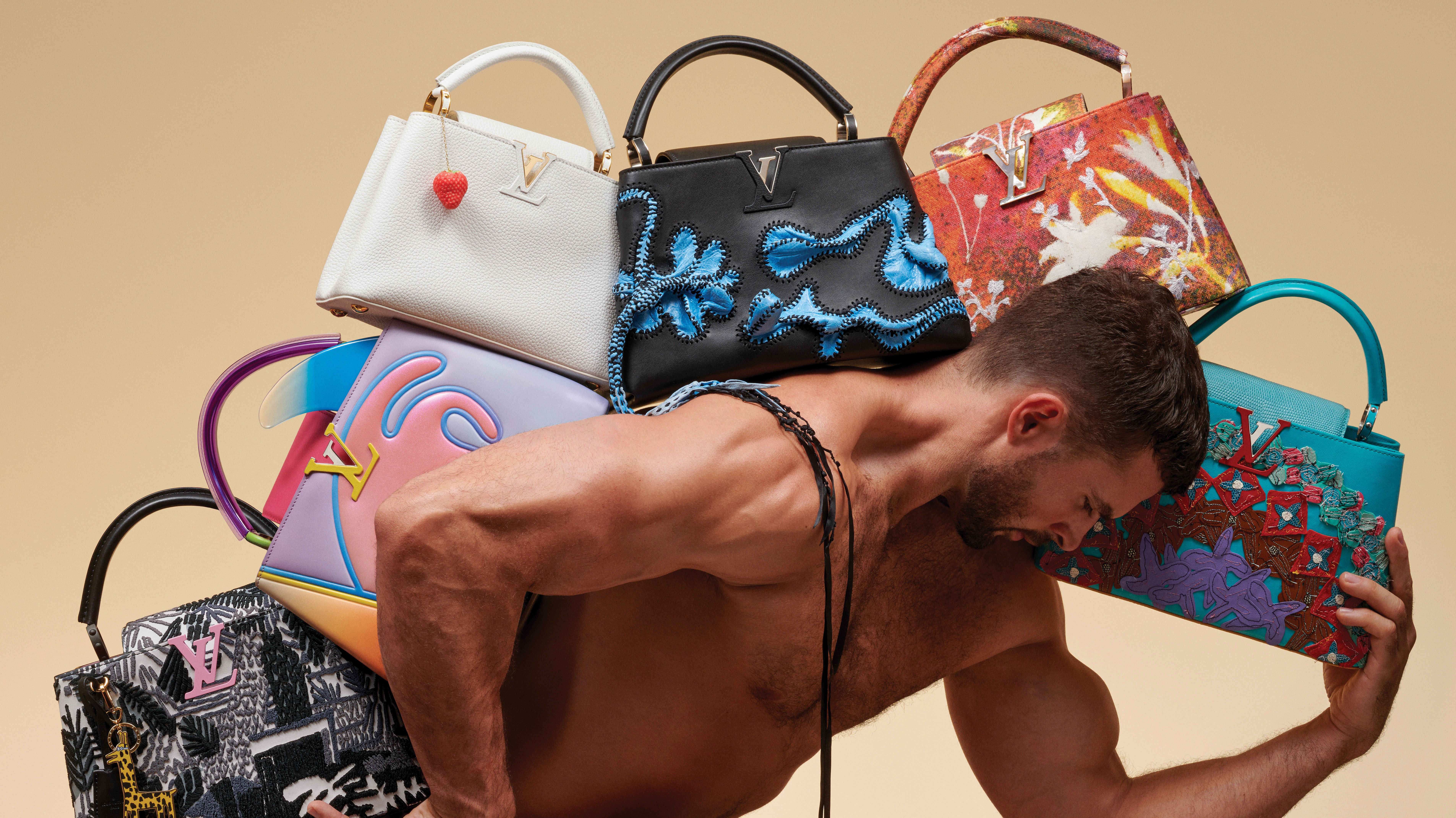Six Artists Talk Louis Vuitton Artycapucines Collaboration
With monogram-free calfskin as canvas, six masters put their signatures on Louis Vuitton’s ever-versatile Capucines handbag. Now on view.

“I still can’t believe people buy my paintings. I guess it’s a cool blessing just to see people reacting positively to the work. I am hoping that the same kind of energy will apply with this bag collaboration. It was cool that we were able to recreate all the details of [my paintings] using totally different materials.”
ALEX ISRAEL
“I decided to reimagine the surface of the bag as one of my wave paintings. We’re a beach culture here in Southern California, and waves dictate the rhythm and pace of L.A. life. What originated as a flat, animated image took on a more sculptural, squishy, wetsuit-inspired quality.”
URS FISCHER
“The things I chose are, in themselves, perfect shapes, so there was nothing else to add. An egg is already amazing; if it were spherical it would be boring. Fruits are made to be very attractive, in the same way that flowers are; that is how plants communicate and, in a way, it’s also how they have sex.”
NICHOLAS HLOBO
“I stitch on my paintings and drawings, and my sculptures are created by layering found materials such as leather, [tires] and copper pipes. I started by looking at the Louis Vuitton motifs, in particular the flower. I felt that I could interpret it as something growing from the bag—literally emerging from it.”
SAM FALLS
“I realized that the best way to approach this project was to just do what I do—make an artwork. I grew up on a farm in Vermont with my mom, an artist who painted botanicals on silks. We started by replicating some of the plants using embroidery, and then used it as part of the surface of the bag.”
TSCHABALALA SELF
“The crux of my artistic mission is based on personal experience… Growing up in Harlem influence[s] this aspect, because I saw so many different kinds of people, all from within one community. It reaffirmed the idea of multiplicity—of expression, identity, and aesthetics, all coming from one small [place].”